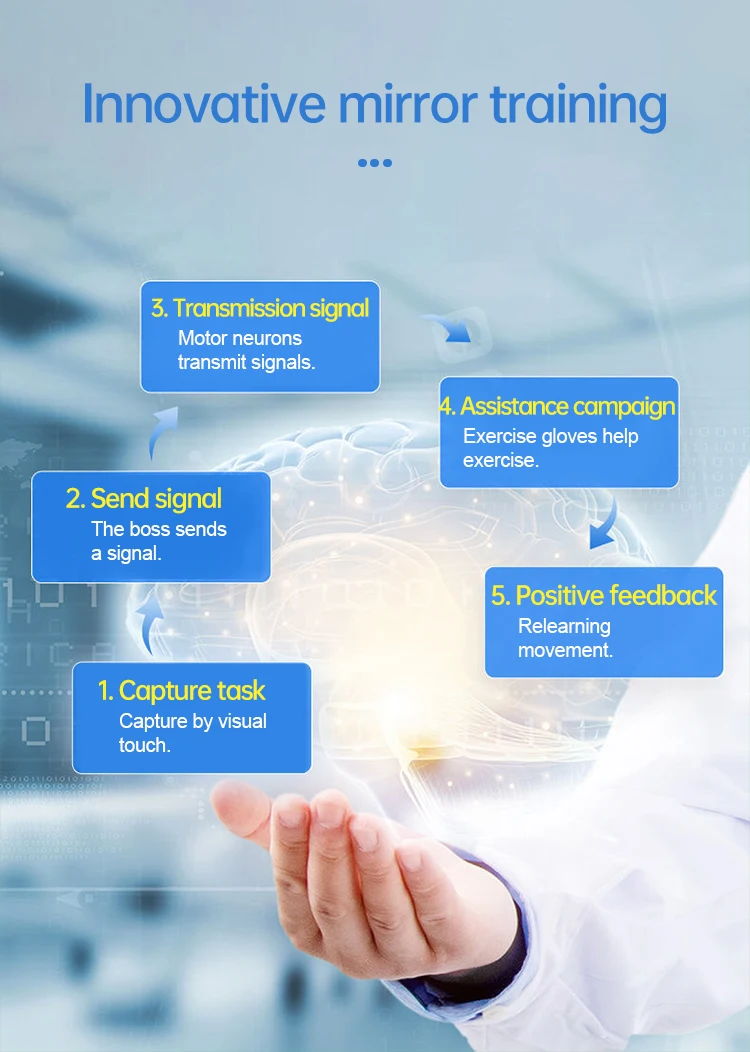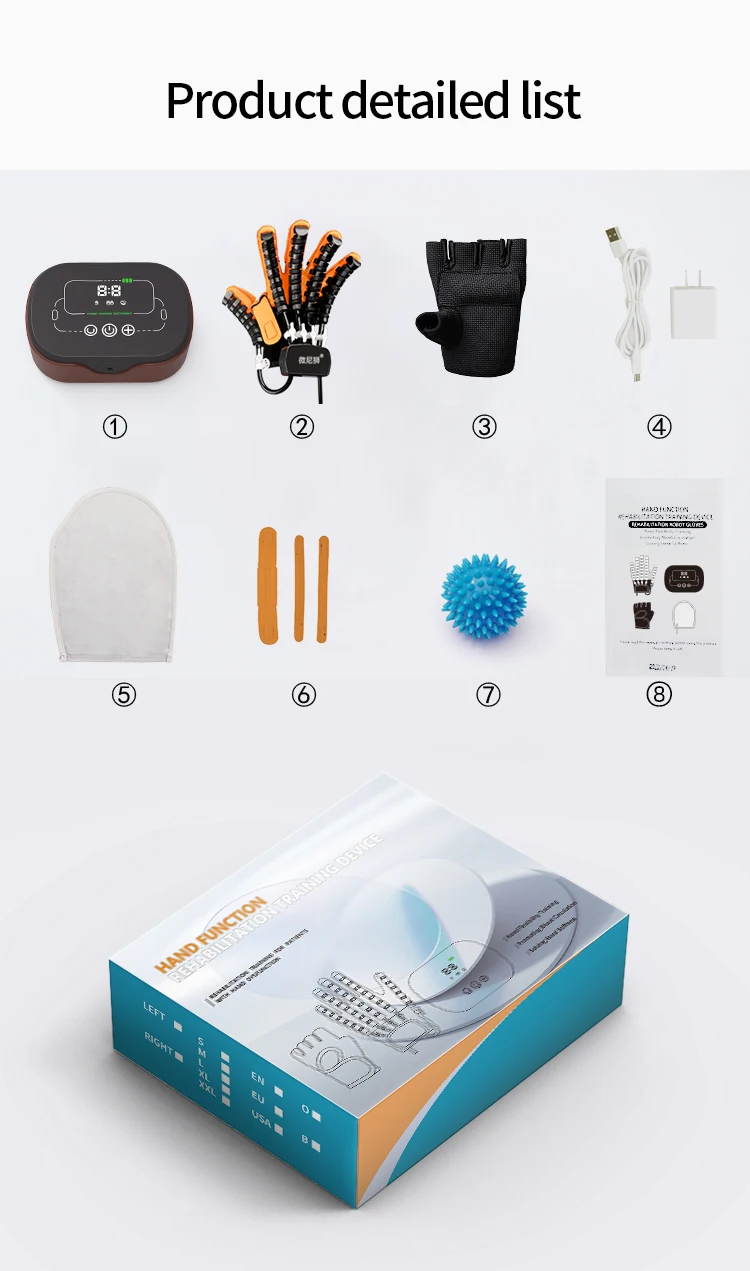





Rehabilitation Robot Glove for Hemiplegia Hand Recovery
The Rehabilitation Robot Glove for Hemiplegia Hand Recovery is designed to enhance the rehabilitation process for individuals recovering from stroke or other conditions that cause loss of hand movement. This innovative glove combines cutting-edge technology with user-friendly features to promote effective hand therapy.
The glove is lightweight and comfortable to wear, making it suitable for daily use. It features adjustable straps to ensure a secure fit for different hand sizes. With gentle assistance from the robotic mechanisms, users can practice gripping, stretching, and opening movements, which are essential for regaining hand strength and dexterity.
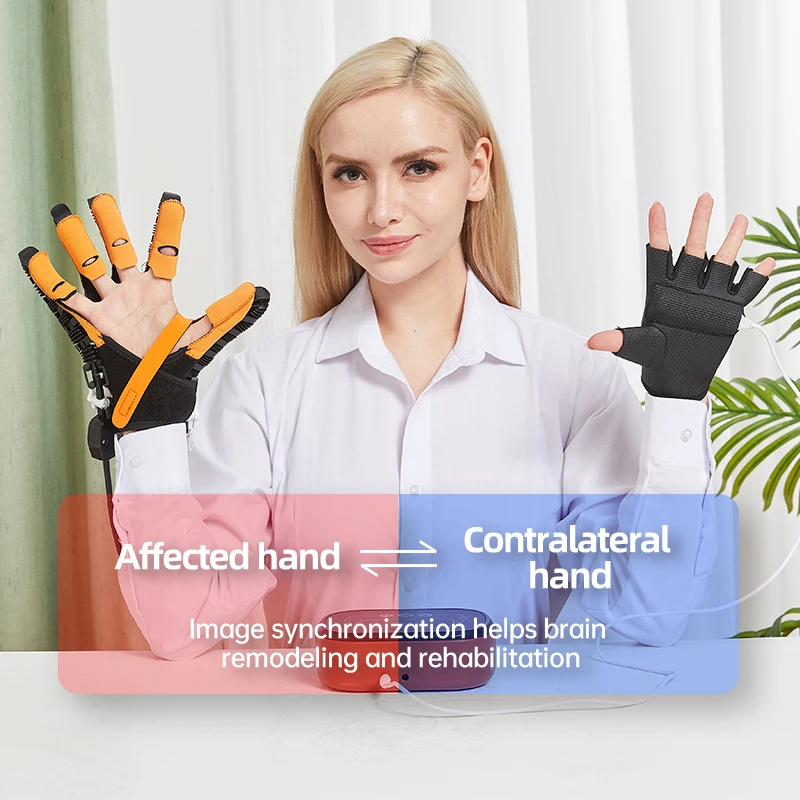
Equipped with multiple therapy modes, the glove offers personalized training options to meet individual recovery goals. The built-in sensors track progress and adjust the difficulty level as needed, ensuring a tailored experience for each user. This feedback helps users stay motivated and engaged throughout their rehabilitation journey.
Designed for ease of use, the Rehabilitation Robot Glove can be operated with just a press of a button. It is easy to clean and maintain, which makes it suitable for home use or clinical environments. With regular practice, users can gain improved control and coordination of their hands, leading to increased independence in daily activities.
Invest in the Rehabilitation Robot Glove for Hemiplegia Hand Recovery and take a significant step towards restoring hand function and enhancing quality of life.
Upgrade Hemiplegia Hand Stroke Recovery Equipment Hand Exercise Therapy Stroke Hand Exerciser Rehabilitation Robot Glove |
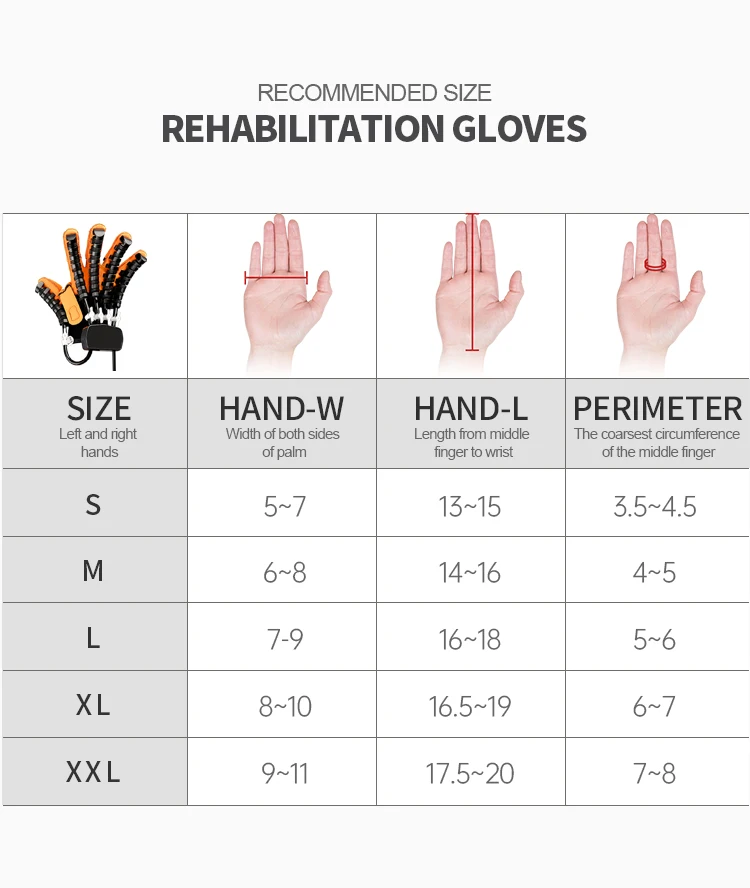
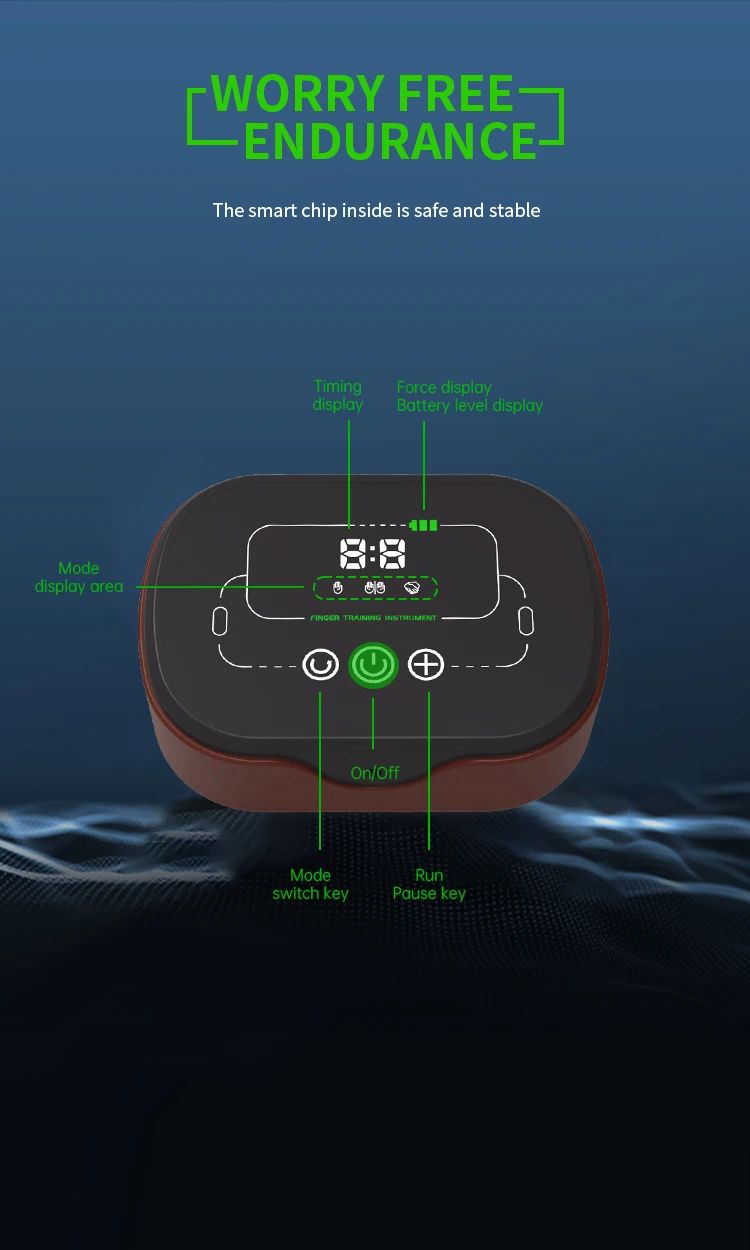
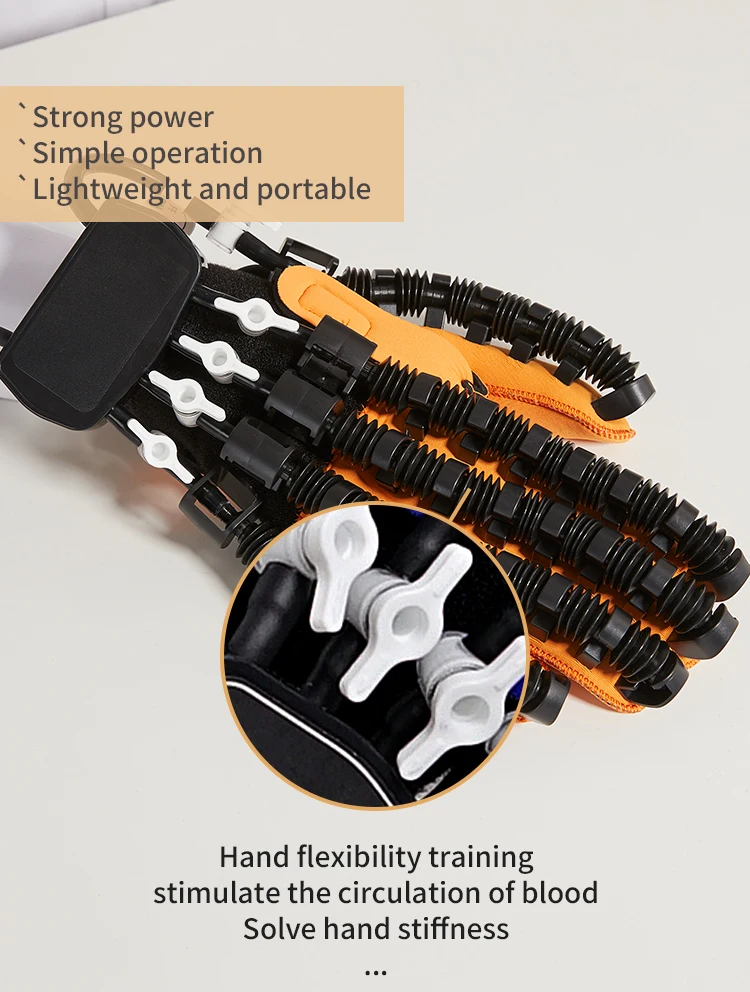
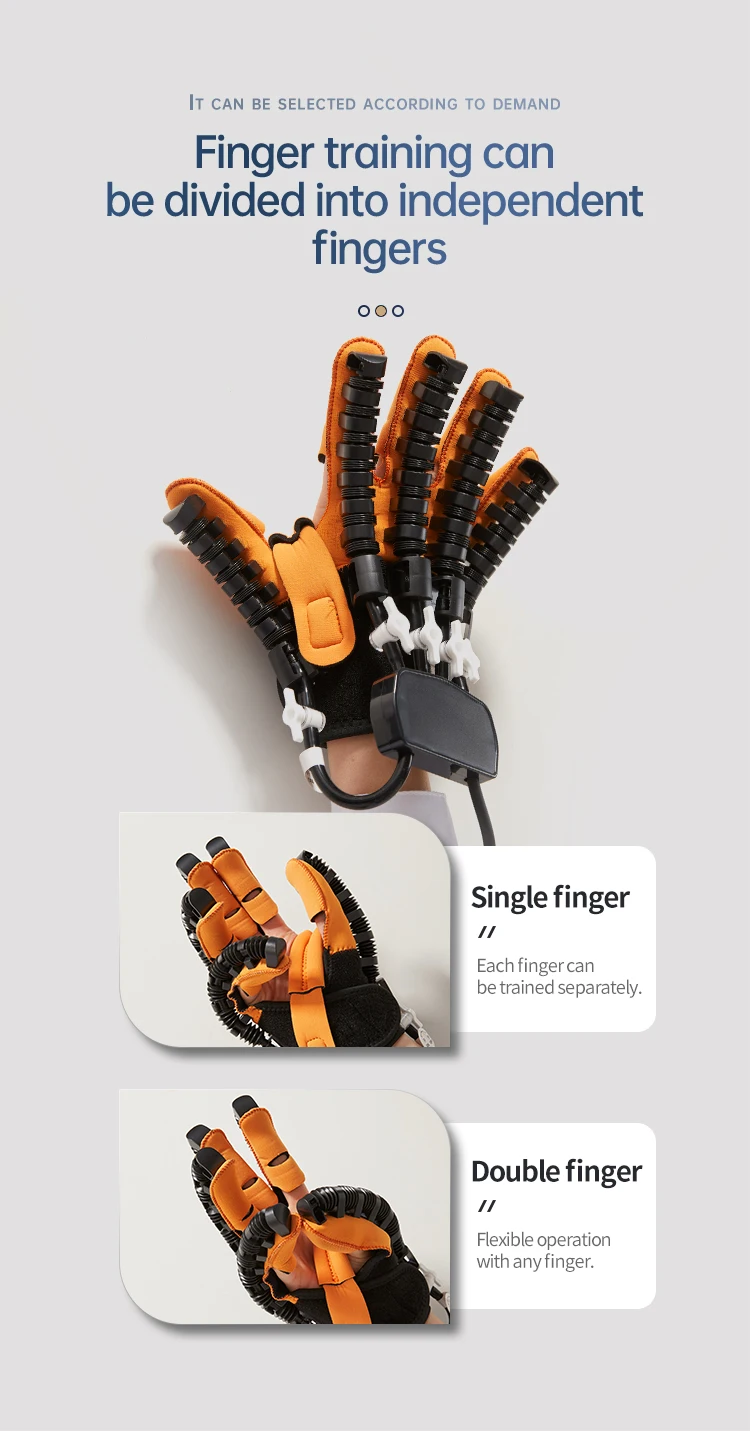
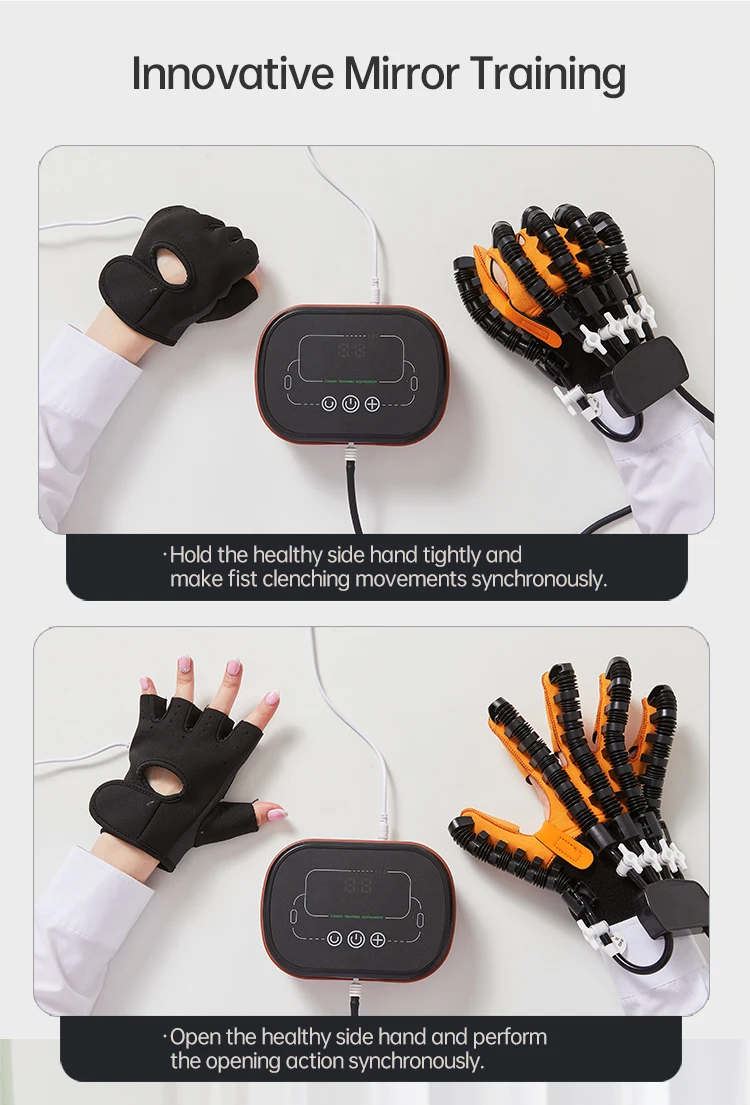
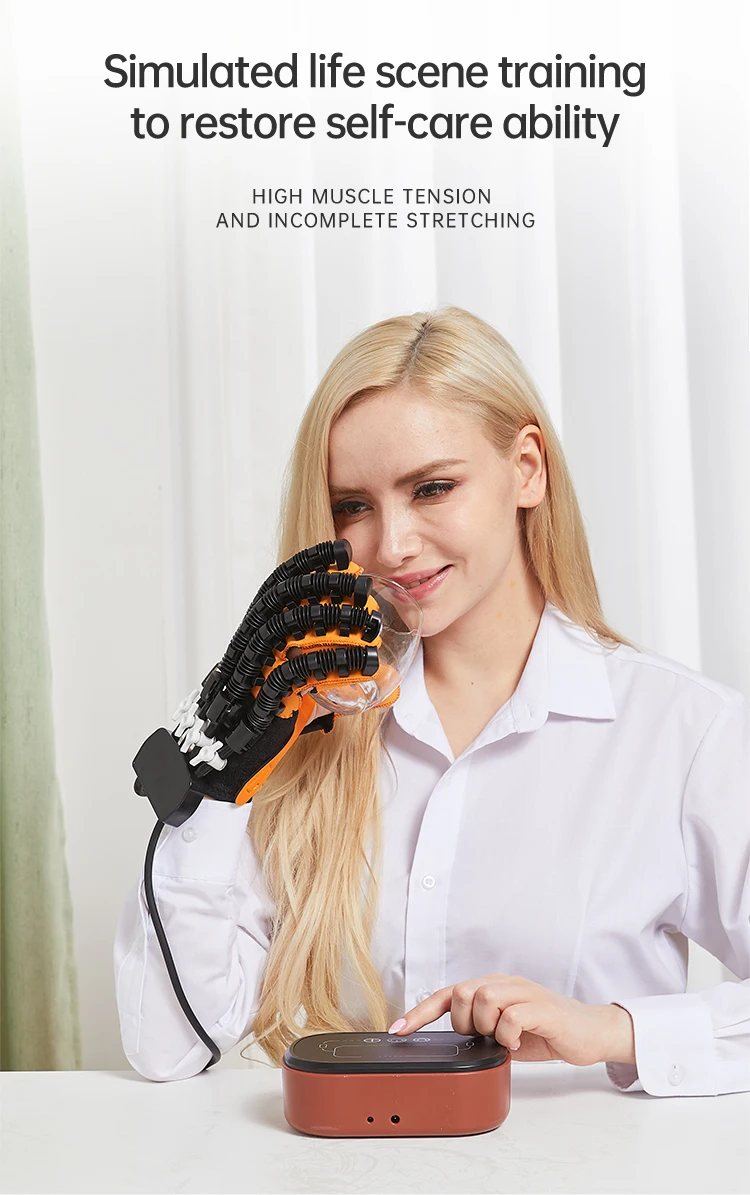
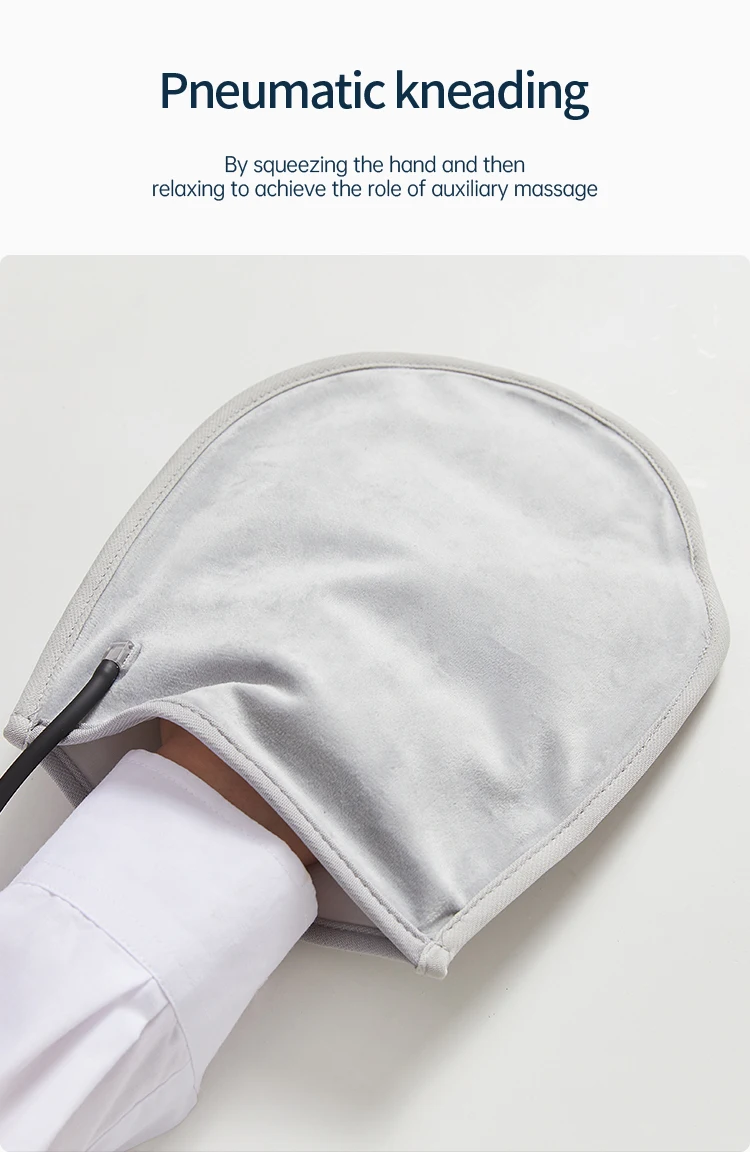
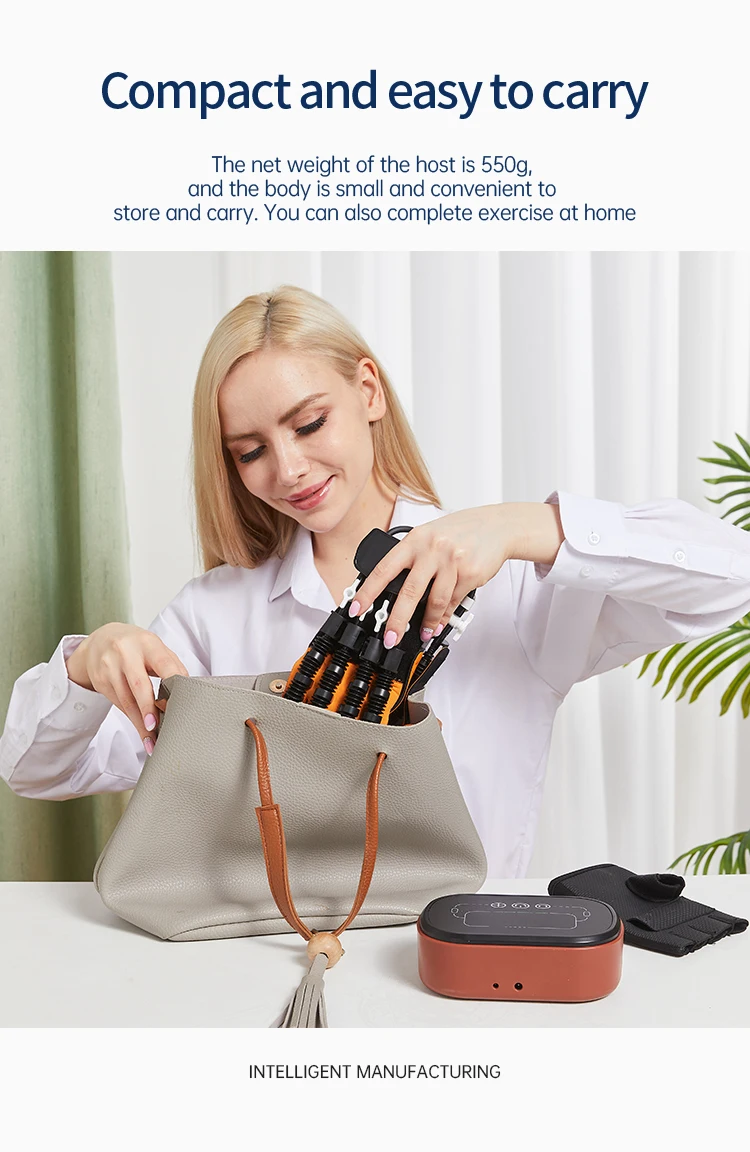
A rehabilitation robot glove for hemiplegia hand recovery is a cutting-edge assistive device designed to aid individuals with hemiplegia (a condition where one side of the body is paralyzed, often due to stroke or brain injury) in regaining hand functionality. These devices combine robotics, physical therapy, and advanced sensor technology to provide targeted rehabilitation for patients. Here are the key traits and benefits of these robot gloves:
Robotic Actuation:
- The glove uses motors and actuators to assist with the movement of the paralyzed hand, helping the user perform functional tasks such as opening and closing their hand, flexing fingers, and making a fist.
- Some designs have individual actuators for each finger or joint to provide more precise movement.
Sensors and Feedback Mechanisms:
- Built-in sensors (e.g., flex sensors, force sensors, or pressure sensors) track the movements and positioning of the user's hand and fingers, allowing the glove to adapt its assistance to the patient's progress.
- Feedback mechanisms, such as visual or haptic cues, help users understand their movements and encourage motor learning.
Adjustable Assistance:
- The device can offer varying levels of assistance based on the patient’s needs and progress, from full robotic support to more passive modes, allowing for gradual improvement in hand function.
Rehabilitation Programs:
- The glove is often connected to a computer or tablet, where customized therapy sessions are programmed. These sessions typically include exercises targeting fine motor skills, strength, and dexterity.
- The patient may perform repetitive tasks, such as grasping, pinching, or releasing objects, under the guidance of the robotic glove.
Portability:
- Many rehabilitation robot gloves are lightweight, portable, and easy to wear, making it convenient for users to continue rehabilitation at home or in clinical settings.
User-Friendly Interface:
- Often designed to be intuitive and simple to use, with easy controls for adjusting settings or therapy modes.
- Some models offer an interface for therapists or caregivers to monitor the patient's progress remotely.
Benefits:
Improved Hand Function:
- The primary benefit is the rehabilitation of hand and finger movements. By assisting with movements and providing feedback, the robot glove can help retrain the brain and muscles, leading to improved hand function over time.
- The glove can help reduce spasticity and prevent contractures, common complications in hemiplegia.
Increased Therapy Intensity:
- It enables more frequent and intensive rehabilitation sessions than traditional therapy. Repetition is key in neural recovery, and the robot glove allows patients to perform tasks many times in one session without exhausting a caregiver.
Motor Learning:
- The glove provides patients with immediate feedback, a critical component in motor learning. This can enhance brain plasticity (the brain’s ability to reorganize and form new neural connections) and promote recovery.
Personalized Rehabilitation:
- The therapy can be tailored to the patient’s specific needs and abilities, with customizable settings that can adjust the difficulty level as the patient’s function improves.
Increased Motivation:
- Interactive exercises or games often embedded in the system can make therapy more engaging and less tedious, motivating patients to stick with their rehabilitation programs.
- Tracking progress through a digital interface also encourages patients by showing tangible improvements.
Reduced Need for Physical Therapy Visits:
- Patients can engage in self-administered therapy at home, reducing the need for frequent visits to rehabilitation centres.
- This not only saves time but also increases access to rehabilitation for individuals who may not have easy access to specialized care.
Assistive for Stroke Survivors:
- For individuals who have had a stroke, robot gloves can significantly aid in hand recovery, helping restore the ability to perform daily tasks, such as holding objects, writing, and eating, which can be challenging after a stroke.
Long-Term Rehabilitation:
- The use of robotic gloves can be extended over the long term, even for patients who have experienced long-standing hemiplegia. Continuous rehabilitation can help maintain and even enhance the patient’s capabilities over time.
